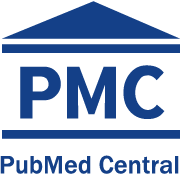Barriers to implementing screening, brief intervention and referral to treatment for substance use in HIV-AIDS health services in Peru
DOI:
https://doi.org/10.17843/rpmesp.2016.333.2293Keywords:
Alcohol and drug abuse, brief intervention, HIV/AIDSAbstract
Objectives. Screening and treatment for substance use among people living with HIV/AIDS (PLWHA) is highly recommended. Nevertheless, in Peru healthcare for PLWHA does not include a standardized or systematic assessment to identify substance use. The aim of this study was to assess the feasibility of implementing screening, brief intervention and referral to treatment (SBIRT) in healthcare settings attending people living with PLWHA. Materials and methods. After providing training in SBIRT for PLWHA’s healthcare personnel (including nurses and physicians) focus groups were conducted to explore knowledge, beliefs and perceived barriers to implementation and interviews were conducted to assess the barriers and facilitators of two tertiary hospitals in Lima, Peru. Results. focus groups and interviews’ thematic coding revealed three dimensions: 1) the unknown extent of substance use within PLWHA, 2) space and time limitations hinder completion of brief interventions during routine visits, and 3) insufficient access to substance use treatment appropriate for HIV patients. Conclusions. Multiple barriers, including lack of awareness of substance use problems, limited space and time of providers, and lack of specialized services to refer patients for treatment make it difficult to implement SBIRT in the Peruvian healthcare system.Downloads
Download data is not yet available.
Downloads
Published
2016-07-25
Issue
Section
Original Article
How to Cite
1.
Hoffman KA, Beltrán J, Ponce J, García-Fernandez L, Calderón M, Muench J, et al. Barriers to implementing screening, brief intervention and referral to treatment for substance use in HIV-AIDS health services in Peru. Rev Peru Med Exp Salud Publica [Internet]. 2016 Jul. 25 [cited 2025 May 11];33(3):432-7. Available from: https://rpmesp.ins.gob.pe/index.php/rpmesp/article/view/2293





























